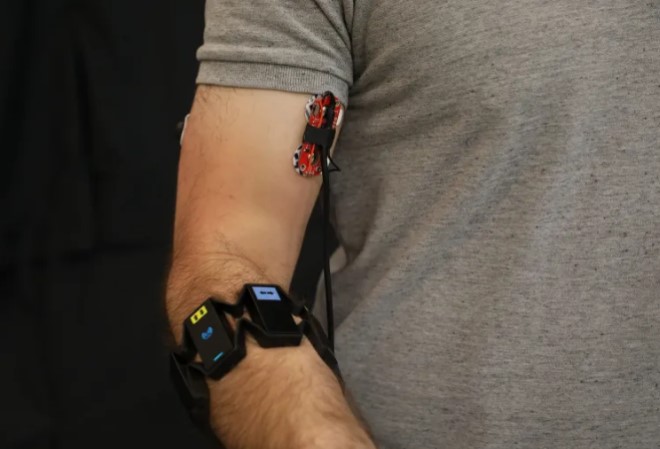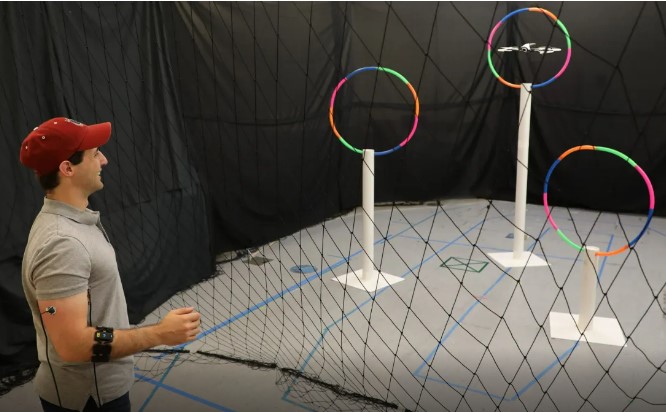Have you ever felt frustrated trying to get a remote control car or drone to move where you want it to move? It starts out fine—we follow the manual and use the controllers—but something goes wrong. The message isn't getting across. And in no time at all, we're wildly throwing our arms around, trying to communicate.
Move! No, no... THIS. WAY. Argggghhhh!
Okay, sure, we'd probably do better to calm down and be more patient. Deep breaths, folks! It'll be alright!
But it would be helpful to be able to just be able to make a motion and have a vehicle just understand where to go.
Well, a new flying drone built by engineers at the Massachusetts Institute of Technology (MIT) appears to have done just that. Called the Conduct-a-bot, this drone is controlled by hand gestures.
Wow!
An extension of ourselves

Stuff (MIT/Joseph Delpreto)
Part of the reason dealing with remote control vehicles and robots can be so tricky is that the controller doesn't exactly follow how we move ourselves. Controllers like joysticks and wheels are helpful, but they're not the same thing as flicking our wrists or slicing our hand through the air.
Many controllers, like those on a Nintendo Switch or a VR set, are able to use more of our natural motions to control our avatars in a virtual environment, a.k.a. a video game.
But the controller for the Conduct-a-bot goes a step further. For one, it is not a hand-held gadget, like a joy con. Instead, it has sensors that respond to different muscle movements along our arm, including our forearm, and two upper arm muscles, the biceps and triceps.
The main controller is a band that wraps around the lower forearm. That might seem too far from the hand for wrist and fingers gestures to matter, but that isn't true. For proof, wrap your one hand around the other arm's lower forearm. Then begin moving the other arm's fingers and wrist. You'll feel the motions travel down from the hand to your forearm. Cool!
Easier to control?
Ultimately, the goal of this MIT project is to make robots easier to control, and therefore, more helpful to people. Watching the video below, you can see how the drone is able to move, stop, rotate, rise or fall all with some simple hand gestures.
The motions look more natural and similar to how we might instinctively motion for something to move. But it also looks a little awkward at times. It would probably take time to get used to.
That said, we'd love to try! And we're certain that this technology will only get better and better over time. Watch the drone fly in the video below.
 The Conduct-a-bot drone is being tested by being sent through hoops at different heights and directions. (MIT/Joseph Delpreto)
The Conduct-a-bot drone is being tested by being sent through hoops at different heights and directions. (MIT/Joseph Delpreto)









